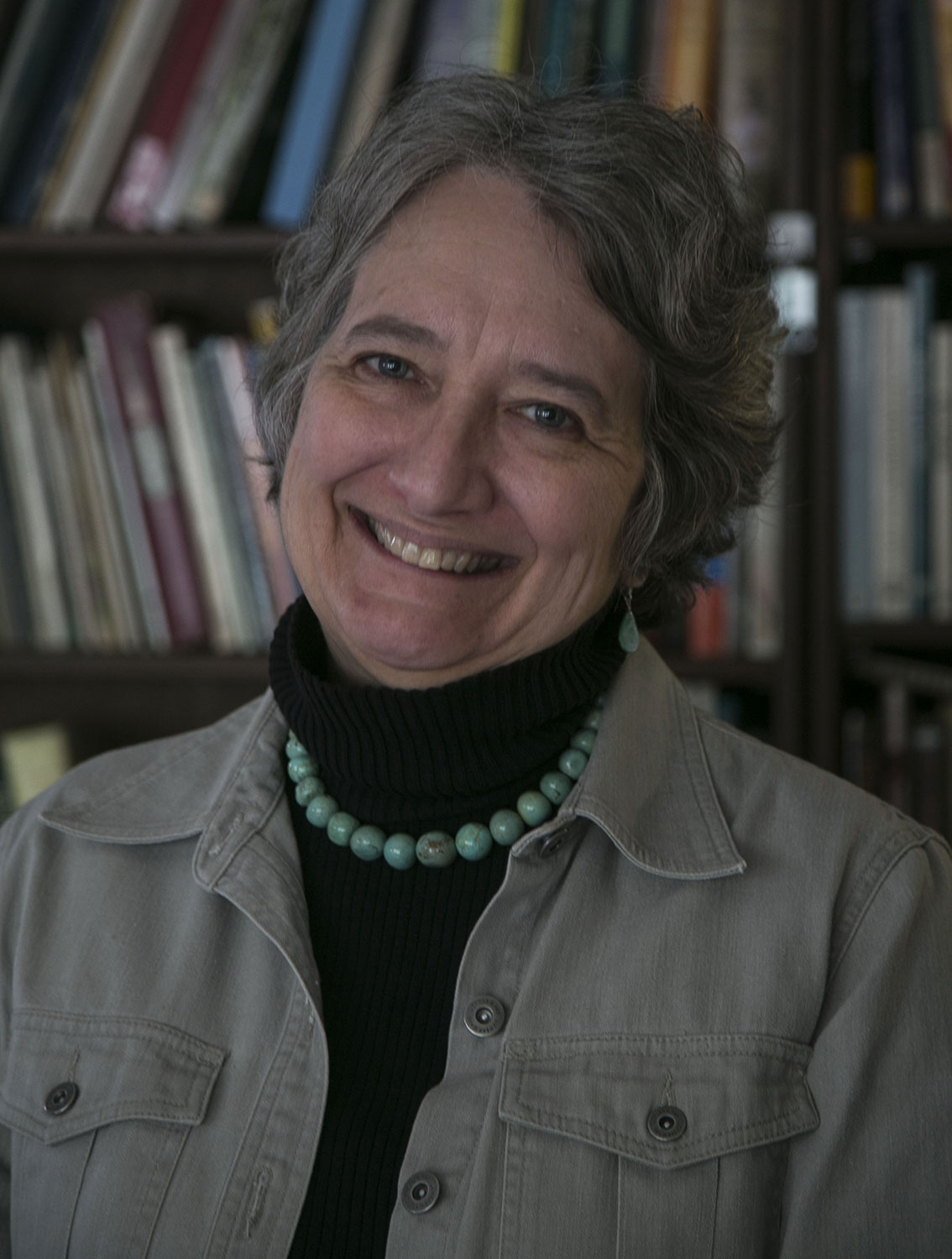Visiting professor from Indiana University
March 9, 2016
Anne Pyburn is a visiting professor at AUCA from Indiana University (IU) Bloomington. At IU, Pyburn is a professor in the Anthropology department and the Provost’s professor in the English department. In Kyrgyzstan, she has worked with archaeologists and citizens' groups to develop projects for cultural resource management.
Pyburn has already been here for two months and will be leaving March 15, 2016. At AUCA Pyburn co-teaches introductory archaeology with another professor from AUCA’s Anthropology department, Aida Abdykanova.

How did you find out about AUCA?
I met Mucaram Toktogulova when she visited Bloomington 12 years ago. At that time she invited me to visit [Kyrgyzstan]. Since then I have been to Kyrgyzstan 6 or 7 times.
Why did you decide to come to AUCA and what for?
I have been working with several people here for some years, but right now Aida Abdykanova and I are trying to finish a report on a project we did together. I decided to come and work on the report with her, and also to visit friends and find out about the heritage-related projects they have been working on.
How did your idea of Skype meetings with professors come about? Do you think they have been successful?
[The Skype meetings] were something I invented. I am the Vice President of the World Archaeological Congress and I work with archaeologists in many countries. I thought that introductory students might like to meet archaeologists working in many places to find out what archaeology is like in other countries. As far as I know the students are enjoying the class.
What can you tell us about your projects/works with Kyrgyzstan?
When I first visited Kyrgyzstan 12 years ago, I had the opportunity to talk to ordinary citizens about their ideas about their heritage. Even though many more important things were happening in the country, I thought that maybe some people might want to think about how the heritage of Kyrgyzstan and how it should be understood and presented to the world. At that time, some people were saying that Kyrgyz heritage was that of nomadic people, but the archaeologists I met, professor Tabaldiev and Professor Abdykanova were saying that Kyrgyz heritage is much more complex and much more exciting that any single story about the past could capture.
When I talked to ordinary people it turned out that many people thought of Kyrgyz heritage as complex and multicultural. Certainly, the Kyrgyz were nomads, but those nomads sometimes had relatives living in cities and they participated in the trade across the Silk Road that bridged the Eastern and Western world across the territory of Kyrgyzstan. From an archaeologist’s perspective, Kyrgyzstan has a fabulous array of archaeological resources that evidence the successful interaction of many very different cultures over thousands of years; certainly there were conflicts and challenges, but the Silk Road continued to be the artery of the world for many generations.
Of course, I am an outsider who sees things from an outside perspective, but a heritage of bridging cultural differences seems to me to be a fantastic heritage to show the world and one that most modern nations could learn from.
The people I met were so enthusiastic about talking about heritage that I asked the US state department to fund twelve Kyrgyz citizens from various walks of life to visit the Midwestern US to evaluate how Americans are using their heritage. I didn’t want to tell people what to do, I wanted people to see for themselves what is done in another country. Americans have some good ideas but the US has also made plenty of mistakes and it is important to learn from both the good and the bad.
We visited live-action museums, small community museums, and formal art and culture museums. I think the time we spent with the Saginaw Chippewa was everyone’s favorite experience. These Native American Indian people have made their own museum that teaches about Ojibwa heritage from their own perspective.
Since that project ended I have collaborated with Professor Abdykanova and Professor Tabaldiev on many grass roots projects in which local people have found ways to preserve and present Kyrgyz heritage to children and visitors. Although I helped find support for these projects (community museums and teacher education workshops), these are not my projects, I did not design them and I haven’t even seen all of them. They are the work of Kyrgyz citizens presenting their own heritage as they believe it should be. One reason I am visiting Kyrgyzstan right now is to document some of these projects.
What knowledge can you share with professors at AUCA?
I have 30 years of teaching experience and also 30 years of research experience in anthropology and archaeology, so I have lots of stories.
I am still learning about Kyrgyz history and archaeology.
What do you like most in AUCA and in Kyrgyzstan?
At AUCA, the STUDENTS! In Kyrgyzstan, the people!
When are you going to come back and how are you planning to keep in touch with professors at AUCA?
I will be back as soon as I can, but it may be a few years. I will see Professor Abdykanova again in Japan at the next World Archaeological Congress, in Kyoto in August. We are good colleagues and also close friends.
To read more about K. Anne Pyburn, visit her page at Indiana University Bloomington: http://inside.indiana.edu/spotlights-profiles/faculty-staff/2013-04-18-iniub-faculty-sonneborn.shtml
